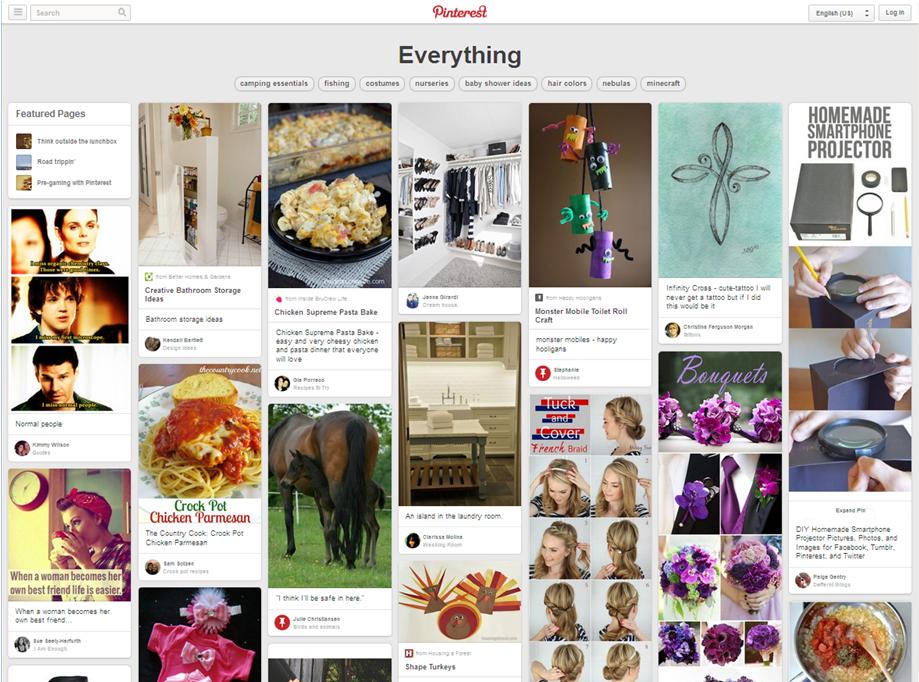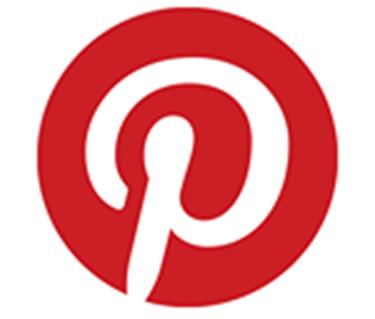A Small Business Owner’s Overview of Pinterest
What Is Pinterest?
Pinterest is an innovative tool that small business owners can employ in order to connect with potential customers in an engaging arena, share their industry expertise, and complement existing marketing efforts with a creative flourish. With more referral traffic than Google+, YouTube and LinkedIn; Pinterest is worthy of your consideration.
The Pinterest community shares content that is judged according to its initial visual engagement. The quality and novelty of your photos, or ‘pins,’ is the root of a successful Pinterest profile. Trailing at a close second is the actual content behind the photo, i.e. the article, page, or blog from which the photo was pinned from and which it is linked. Pinterest users seek images that excite along with stories that engage.
Unlike Facebook or Twitter, they’re not looking to Hollywood superstars or acclaimed industry professionals to provide that content; they’re looking to you. According to 2014 study via Ahalogy regarding Pinterest users, 83% of active users would prefer to follow the Pinterest profiles of their favorite brand, or store, than their favorite celebrity. The Pinterest community welcomes the involvement of small businesses. Are you ready to join?
Who Uses Pinterest?
The Ahalogy study further explains that 22% of the U.S. population uses Pinterest at least once a month, which means the primary point of interaction with one in four of your potential customers could occur on the site.
According to Joe Pulizzi’s book, Epic Content Marketing, Pinterest primarily attracts 18 to 34 year old women. Businesses, such as those related to cooking, fashion and home décor, that target this demographic tend to excel.
Pinterest users represent a unique type of consumer. Ahalogy states that generally, “active Pinterest users are young, tech-savvy and have more disposable income than non-users,” and that they are “early adopters who love to try and buy new things, but are becoming harder to reach through traditional media outlets.”
These are key factors to note before creating a Pinterest account. Unlike other social media sites, Pinterest targets a very specific audience and therefore operates on a very particular paradigm. It is not a good fit for every business. Also, while users are aware of brand presence on Pinterest, and, in fact, they seek it, they will not accept a reiteration of your ad copy as successful pins. For a company to establish an effective Pinterest profile, you must employ nuance, thought and creativity with your choice of pins.
Why Use Pinterest?
On Pinterest, users are actively seeking, following and engaging with brands. “They’re open to brand activity and marketing on Pinterest,” per the Ahalogy study. “As long as it adds value to their life.”
Pinterest users are active, explorative people, and desire content that satisfies or contributes to that lifestyle. Due to a nearly universal penchant for trying new things, they use Pinterest in order to discover and, eventually, try out or purchase new products from different brands.
“They are significantly more likely to try new projects and products than non-users and about one-half of them have tried more than six new activities because of something they saw on Pinterest,” the study states. “53% of daily users have purchased online or at a traditional retail store because of something they saw on Pinterest.”
For these reasons, Pinterest should be described as an ‘interest-drive community’ rather than a ‘Social Media site.’ People flock to and populate Pinterest, not to share personal information like Facebook or business information like Twitter/LinkedIn; rather, they come to search for new projects, products and ideas that bring genuine value to their lives. In fact, 39% of Pinterest users have replaced traditional search engines, such as Google, with Pinterest, and many use the site as a buyers’ guide to determine what they will purchases.
Pinterest, therefore, may arguably be the smartest way for a small business to go social.
Three Beginning Steps to Pinterest
Once you’ve decided to try Pinterest, here are a few introductory notes that should assist you.
One, know your audience.Determine who you are trying to hook with your Pinterest campaign. As is the case with all marketing efforts, the end-goal should be the generation of new leads or direct sales. Ask yourself, “Are my clients/customers on Pinterest?” Keep a persona of your ideal customer in your mind as you pin. This will guide you towards posting strong pins that will attract that customer to your profile and to your business. If your average customer is not a likely Pinterest user, there are still ways to leverage the site to attract their business. Can you target your customer’s spouse, children, or other influencers to bring him/her indirectly to your business?
Two, develop a Pinterest calendar. By proactively deciding when to publish content, you’ll ensure a greater chance of a successful Pinterest campaign. Many Pinterest experts advise that you post between 10 and 15 pins, daily, in order to reach all of your followers. Most Pinterest users visit the site between 7 to 9 am and 8 to 10 pm on weekdays and throughout the weekend. A large number of users frequent Pinterest during business hours, as well. If 10 pins is not a realistic goal for your company, start lower and measure the success of the campaign from there. On Pinterest, quality far outweighs quantity.
Three, create (and curate) valuable and original content. Content is King on Pinterest and deserves careful consideration. Many novice users fall into the habit of pinning everything to their boards. Weigh the value of each pin and ask yourself if your followers will truly benefit from the content. Additionally, customize your Pinterest profile into an extension of your corporate website. Be sure to compose unique pin descriptions that reflect your branding. In an article on SEO.com, the author accurately wrote, “Your boards should be a commemoration of things that embody your business.” Leverage Pinterest as an opportunity to promote your company’s brand identity through the content that you pin or re-pin.
Pinterest Tips and Tricks: Beyond the Basics
- Content Marketing over Product Promotion. There’s a time and place to actively promote your business and market your products and services; Pinterest is not that place. For a truly effective Pinterest experience, create content that adds value to the lives of your audience. They’ll remember you, follow you and turn to your business in the future. This does not mean to avoid all branded content, just frame it in a way that focuses on the viewers. Their direct gain from the content will eventually translate into a benefit for your company.
- Make Your Company Visual. Not all companies are intrinsically visual. Restaurants, retailers and other businesses whose products, services and branded identity are more photo-friendly may discover Pinterest to be an easy medium to manage. If you find that your business is a tad camera-shy, flex some creative muscle and determine a way to translate your brand into a visual identity.
- Can You DIY It? Pinterest is very project-centric. According to the Ahalogy study, the top-browsed Pinterest categories for active users were Food & Drink, DIY & Crafts, Home Décor, and Holidays & Events. Is it possible that your brand fits into a project niche? By capitalizing on this optimal Pinterest real estate, you’ll become a participating voice in your followers’ passions and craft a personable relationship with a potential customer.
- Create a Community. No online profile is meant to be a silo. Interact with both your online followers and with your real-life customers through Pinterest. Comment, like and re-pin pins that speak to your brand. You can push this engagement level further by creating a board on your Pinterest page that focuses on customers. This may be a space to re-pin and positively comment on photos that diners took of their favorite meal from your restaurant or photos of your home accessory store’s products featured in someone’s remodeled kitchen, etc. By connecting with customers on Pinterest, which is innately a very intimate space of discovery, you significantly strengthen the bond with them and encourage them to return.
- Show Yourself. Pinterest users want to see you. Literally, you. In the personable community of Pinterest, members prefer to interact with and receive content from real people whose faces they can see. For this reason it’s recommended to have a personal account rather than a business one (plus, we all saw what happened to business pages on Facebook—access to your followers was restricted in order to entice you to buy promoted posts to reach them). Push yourself to blend your company’s brand identity with your Pinterest persona. A successful and creative way of forming a sense of personality behind your Pinterest profile is to create a board about your projects. If you own a restaurant, this may be a board with your favorite recipes. If you own an auto-repair shop, this may be a board about restoring or customizing your car.
Have fun! In most cases, the more that you engage with your own Pinterest campaign, the result will be more interaction from followers. So be creative and have fun with your boards.









